This article has been reviewed according to Science X's editorial process and policies. Editors have highlighted the following attributes while ensuring the content's credibility:
fact-checked
peer-reviewed publication
trusted source
proofread
Plants offer fruit to insects to disperse dust-like seeds, botanist discovers
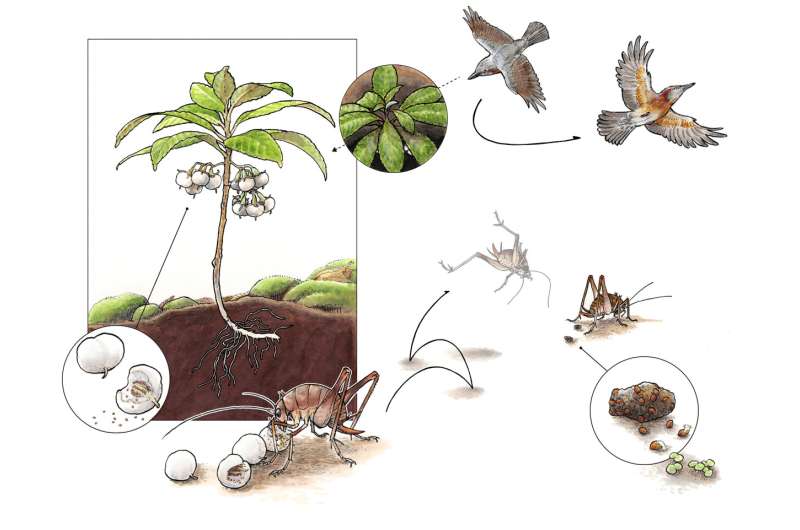
Fruit exist to invite animals to disperse the swallowed seeds. A Kobe University research team found that plants targeting insects rather than birds or mammals for this service are more common than previously thought. These plants produce dust-like seeds and fruit suitable for minute, ground-dwelling animals.
Whether it's strawberries, apples or grapes, the reason why plants make tasty fruit is to invite and reward animals to also eat and then disperse their seeds, which are smooth and sturdy for just that purpose.
Given the size of most seeds, it's natural that the animals associated with this are mostly birds and mammals. Incidentally, this is also why fruit are often red and dangle from branches. This allows the intended dispersers to easily see and reach the fruit.
Insects, on the other hand, while they are often associated with plant pollination, are not seen as important for dispersing ingested plant seeds, mostly because the animals' minute size wouldn't allow for the safe passage of the seed through the animal.
However, there are plants that produce dust-like seeds embedded in whitish and somewhat translucent fruit that are difficult to see from above and that fall to the ground as soon as they are ripe. And while this makes insects the prime candidates, it has not been known who the actual dispersers are.
The Kobe University botanist Suetsugu Kenji has an extensive background in studying interactions between plants and arthropods (animals like insects, crabs, and spiders), with a particular focus on dust-seeded plants in Japan.
He and his team traveled to Amami-Oshima Island in Japan where a shrub-like plant called Rhynchotechum discolor produces such translucent fruit with dust seeds.
The researchers took automated night photographs of the fruit on the ground to find out who eats them and additionally captured insects in the plants' vicinity (using a mixture of Kirin beer and the soft drink Calpis, both produced in Kobe University's home region of Kansai).
They then put the captured insects into containers to search their excrement for plant seeds and, with a separate feeding experiment, to find out how many of the seeds they eat can germinate.
-
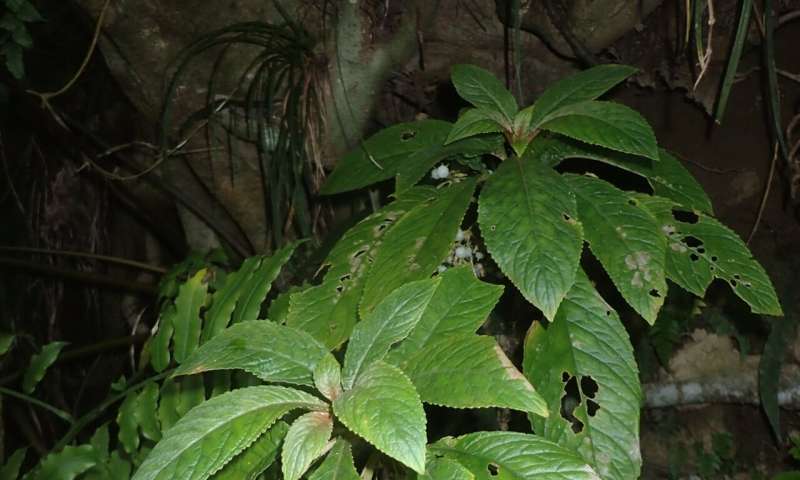
The shrub Rhynchotechum discolor produces dust-like seeds embedded in whitish and somewhat translucent fruit that are difficult to see from above and that fall to the ground as soon as they are ripe. Credit: Tashiro Yohei -
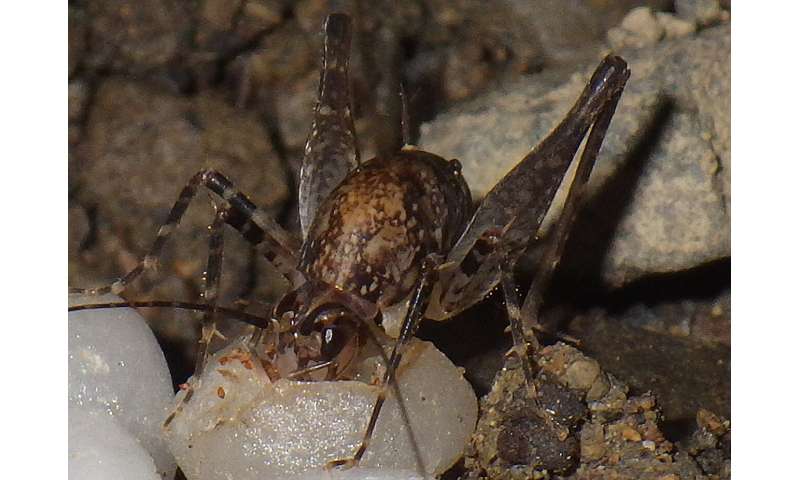
Camel crickets were the main consumers of the fruit of the shrub Rhynchotechum discolor. Credit: Tashiro Yohei -
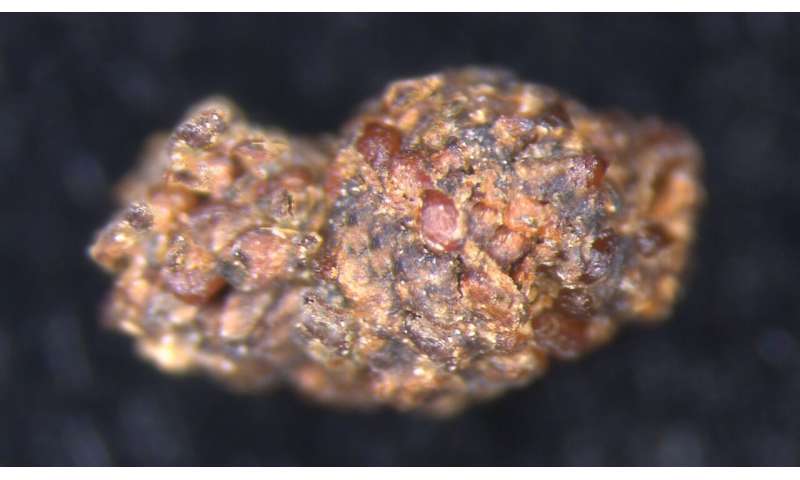
The analysis of the excrements of camel crickets captured in the vicinity of the shrub showed that they contained numerous intact-looking seeds. Credit: Suetsugu Kenji -
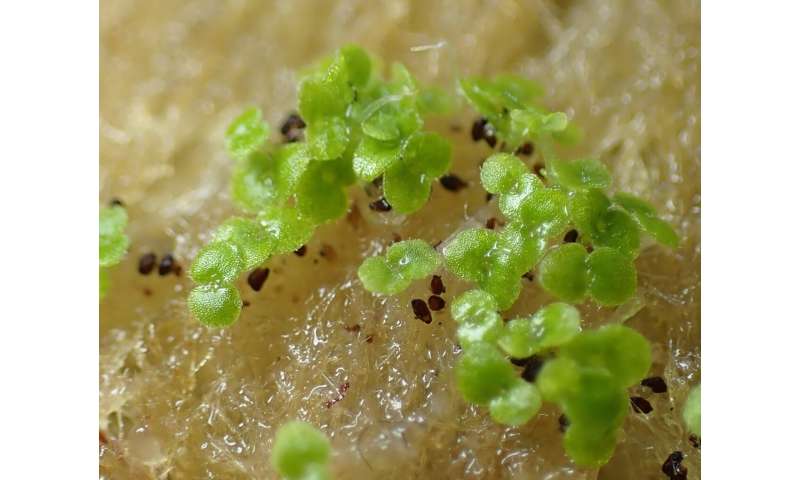
Feeding experiments on captured camel crickets showed that around 80 percent of the seeds ingested and later excreted by camel crickets were fully viable and could germinate. Credit: Suetsugu Kenji
Their findings, published in the journal Plants, People, Planet, confirmed that insects, specifically camel crickets, were the primary consumers of the fruit. Moreover, the captured insects' excrement contained numerous seeds, about 80% of which were fully viable.
"This result provides the first evidence of insects acting as seed dispersers for light-harvesting, green plant in regions inhabited by land-dwelling mammals," says Suetsugu.
Previously, seed dispersal by insects was thought to occur only in special situations. There is the case of the weta, gigantic, flightless crickets home to New Zealand, that have taken on ecological functions usually associated with ground-dwelling mammals that don't exist there. The ability of insects to disperse dust-sized seeds was understood to be largely restricted to heterotrophic plants.
These non-green plants don't harvest light but eat underground fungi and get the nutrients and energy they need from there, so their seeds can be tiny. Suetsugu explains, "Our findings challenge the notion that insect-mediated seed dispersal is a special case and suggest that it may be more widespread and ecologically important than previously understood."
This discovery excites Suetsugu for another reason: "It also contributes to the understanding of the evolution of dust seeds. Because they are minute and contain minimal energy reserves, their evolution has often been associated with heterotrophy. However, our research on Rhynchotechum discolor suggests that dust seeds can evolve from other selective pressures.
"Given that smaller seeds are more likely to survive digestive processes, a small seed size could have evolved as an adaptation to convert seed predators into seed dispersers."
In their paper, the research team notes that the shrub they investigated is likely not unique: "The fruit and seed morphology and coloration of other members of Rhynchotechum parallel those seen in R. discolor, suggesting that seed dispersal by camel crickets is widespread within the genus, which comprises 16 species. In a broader ecological context, similar seed dispersal systems might be found among plants with dust seeds, which are present in at least 13 families."
Suetsugu adds, "We have laid the groundwork for future studies to investigate similar interactions in other regions and with other plant species. This research enhances our knowledge of how plants adapt to their environments and the roles that different organisms play in their life cycles."
More information: Unlikely allies: camel crickets play a role in the seed dispersal of an Asian autotrophic shrub, Plants People Planet (2024). DOI: 10.1002/ppp3.10556
Journal information: Plants, People, Planet
Provided by Kobe University



















